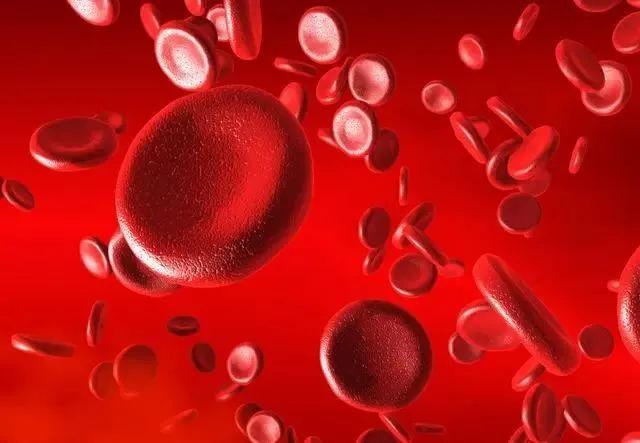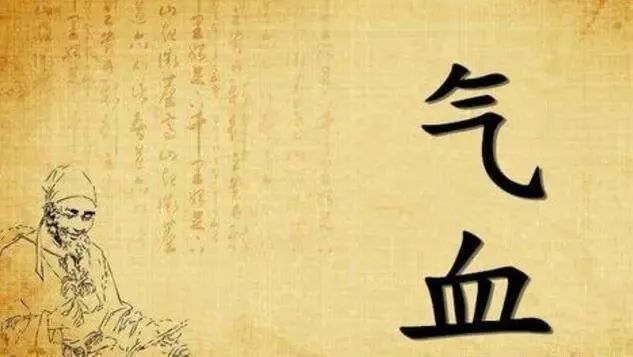
Long press the QR code on the right to interact with Guo Li
Health and wellness tips are at your fingertips
National Broadcasting and Television Gold Host Guo Li is here toprotect your health
Guo Li’s Introduction: Qi and blood are the material basis for the physiological activities of all organs and tissues in the human body, and the generation and movement of qi and blood rely on the normal physiological functions of the organs. Therefore, pathologically, when the organs are affected, it inevitably impacts the qi and blood throughout the body, and any pathological changes in qi and blood will also affect the organs. The pathological changes of qi and blood are always reflected through the abnormal physiological functions of the organs. Due to the close relationship between qi and blood, in pathological conditions, qi disorders will affect blood, and blood disorders will also affect qi, especially qi disorders affecting blood are more common. The pathogenesis of qi and blood imbalance, like the rise and fall of evil and righteousness, and the imbalance of yin and yang, is not only the basis for various pathological mechanisms of organs and meridians but also the foundation for analyzing and studying the pathogenesis of various diseases.

Qi Imbalance
The pathological changes of qi include insufficient generation or excessive consumption of qi, abnormal movement of qi, and decline in the physiological functions of qi, specifically manifested as qi deficiency, qi sinking, qi stagnation, qi reversal, qi obstruction, and qi collapse.
1. Qi Deficiency: Qi deficiency refers to insufficient original qi, leading to pathological changes in the decline of the functions of the whole body or certain organs. Qi deficiency is mainly characterized by insufficient original qi, reduced organ function, and decreased resistance to disease. The main causes of qi deficiency are often congenital insufficiency, lack of nourishment, dysfunction of the lungs, spleen, and kidneys, or excessive labor, prolonged illness, and aging. Qi deficiency is commonly seen in chronic diseases, elderly patients, nutritional deficiencies, recovery periods from illness, and weakened constitutions. Clinical manifestations include shortness of breath, reluctance to speak, fatigue, and a weak, soft pulse.
The characteristics of qi deficiency in various organs are often related to their physiological functions, such as lung qi deficiency characterized by the decline of the function of “governing qi”; heart qi deficiency characterized by the decline of the functions of “governing blood vessels” and “housing the spirit”; spleen and stomach qi deficiency characterized by the decline of the functions of “transforming and transporting food and fluids” and “transporting essence” as well as middle qi sinking; and kidney qi deficiency characterized by the decline of the functions of “storing essence,” “producing marrow,” “qi transformation,” “sealing and storing,” and “receiving qi”.
Since the lungs govern the qi of the entire body, and the spleen is the foundation of postnatal qi and blood generation, spleen and lung qi deficiency directly affects the generation of original qi. Therefore, the so-called qi deficiency syndrome in clinical practice often refers to spleen qi deficiency, lung qi deficiency, and spleen-lung qi deficiency.
Although qi deficiency and yang deficiency both refer to the decline of organ function and reduced resistance to disease, qi deficiency refers to a simple functional decline, while yang deficiency occurs on the basis of further development of qi deficiency, resulting in insufficient yang qi. Therefore, qi deficiency falls under the category of yang deficiency, but qi deficiency does not necessarily mean yang deficiency. The distinction lies in that qi deficiency is deficient without cold signs, while yang deficiency is deficient with cold signs.
Due to the extremely close relationship between qi, blood, and body fluids, qi deficiency inevitably affects blood and body fluids, leading to various pathological changes in blood and body fluids. For example, qi deficiency can lead to blood deficiency, blood stasis, and hemorrhage, and can also cause metabolic disorders of body fluids, such as spleen qi deficiency failing to transform dampness, resulting in phlegm retention and edema.
2. Abnormal Upward and Downward Movement: Abnormal upward and downward movement includes qi sinking, qi collapse, qi stagnation, qi reversal, and qi obstruction.
(1) Qi Sinking: Qi sinking is one of the pathological mechanisms of qi deficiency, characterized by the inability of qi to rise and instead descending. Qi sinking often develops from further qi deficiency. The spleen should rise to be healthy; if spleen qi is deficient, it can easily lead to qi sinking, often referred to as “middle qi sinking.” The relative stability of the position of internal organs relies on the normal movement of qi rising and falling. Therefore, in the case of qi deficiency and weakened lifting force, certain internal organs may sag, such as gastric prolapse, kidney prolapse, uterine prolapse, and rectal prolapse, accompanied by symptoms such as abdominal fullness and heaviness, frequent urge to defecate, shortness of breath, fatigue, low voice, and weak pulse.
(2) Qi Collapse: Qi collapse refers to a pathological change where qi deficiency reaches an extreme state, leading to the risk of collapse and disappearance. Due to severe depletion of qi, blood, and body fluids, the physiological functions of the organs decline drastically, and true qi leaks out, leading to a critical state of collapse. Qi collapse can be classified into gradual collapse and sudden collapse: gradual collapse occurs due to the gradual depletion of essence qi, leading to extreme organ dysfunction; sudden collapse occurs when essence qi is suddenly depleted, resulting in the loss of yin and yang. For example, heart qi collapse leads to floating and chaotic spirit, with a faint pulse; liver qi collapse leads to blurred vision and slight twitching of the limbs; spleen qi collapse leads to significant muscle loss and persistent diarrhea; lung qi collapse leads to rapid breathing and snoring; kidney qi collapse leads to involuntary loss of body fluids and difficulty in breathing. Sudden loss of yin qi leads to wrinkled skin and sinking eyes, restlessness, and delirium; sudden loss of yang qi leads to profuse cold sweat and cold extremities.
(3) Qi Stagnation: Qi stagnation refers to pathological changes where the qi of certain organs, meridians, or local areas is obstructed. Qi stagnation is mainly due to emotional distress, phlegm, dampness, food accumulation, blood stasis, and other obstructions, as well as external injuries, excessive exertion, falls, and bruises, leading to obstruction of qi movement and dysfunction of certain organs and meridians, characterized by fullness, distension, and pain. Since the movement of qi in the body is closely related to the liver’s role in regulating and dispersing, the lung’s role in descending, the spleen’s role in ascending, and the stomach’s role in descending turbid substances, qi stagnation is often associated with dysfunction of these organs.
When qi moves, blood moves; when qi stagnates, blood stagnates; when qi moves, water also moves; when qi stagnates, water accumulates. Therefore, qi stagnation can lead to blood stasis, water retention, and pathological changes such as blood stasis, phlegm retention, and edema.
(4) Qi Reversal: Qi reversal refers to a pathological change characterized by the abnormal and chaotic movement of qi. Qi reversal mainly refers to the upward movement of qi, which is a pathological change resulting from abnormal rising and falling of qi and the chaotic movement of organ qi. Qi reversal is often caused by emotional distress, inappropriate food temperature, or phlegm obstruction. Qi reversal is most commonly seen in the lungs, stomach, and liver. The lung’s function is to clear and descend; if lung qi reverses, it loses its ability to descend, leading to cough and upward qi; the stomach’s qi should descend harmoniously; if stomach qi reverses, it leads to nausea, vomiting, belching, and hiccups; the liver governs upward movement; if liver qi reverses, it leads to excessive upward movement, resulting in headaches, facial redness, and irritability. Since the liver is a solid organ, it actively governs upward movement and stores blood, therefore, when liver qi reverses, it can lead to blood following the reversed qi, resulting in coughing up blood, vomiting blood, or obstructing the clear orifices, leading to fainting.
Generally speaking, qi reversal is primarily due to excess, but there are also cases where deficiency leads to qi reversal. For example, lung deficiency leading to loss of descending function or kidney not receiving qi can lead to lung qi reversal; stomach deficiency can also lead to stomach qi reversal, which is classified as deficiency leading to qi reversal.
(5) Qi Obstruction: Qi obstruction refers to a pathological change where the qi of the organs and meridians is blocked and not flowing. Qi obstruction is often caused by external pathogens such as wind, cold, dampness, heat, and phlegm deeply invading the organs or obstructing the meridians, leading to a loss of normal flow in certain orifices. For example, if heart qi is obstructed, it can lead to delirium and convulsions; if chest and lung qi is obstructed, it can lead to chest tightness and wheezing; if bladder qi is obstructed, it can lead to urinary retention; if large intestine qi is obstructed, it can lead to constipation; if meridian qi is obstructed, it can lead to joint pain. Among these, heart obstruction leading to confusion is the most severe; the so-called obstruction syndrome mainly refers to heart qi obstruction.
Blood Imbalance
Abnormal physiological functions of blood mainly manifest as insufficient blood generation or excessive loss, abnormal blood movement, and reduced nourishing functions of blood. Blood imbalance includes blood deficiency, blood stasis, blood heat, and hemorrhage.
1. Blood Deficiency: Blood deficiency refers to a pathological change characterized by insufficient blood and reduced nourishing functions. The causes of blood deficiency include: excessive blood loss, such as from vomiting blood, nosebleeds, excessive menstruation, and traumatic bleeding, leading to significant loss of blood, while new blood cannot be generated and replenished in time; insufficient blood generation due to weak spleen and stomach, which are the sources of qi and blood generation, leading to reduced materials for blood generation or weakened functions for blood generation; prolonged illness and chronic consumption leading to depletion of nourishing blood; and blood stasis obstructing blood flow, preventing new blood from being generated, ultimately leading to systemic blood deficiency.
Blood is one of the essential substances for maintaining life activities in the human body and has a nourishing effect. Therefore, insufficient blood cannot nourish the organs and tissues, inevitably leading to systemic or local malnutrition and gradual decline in physiological functions. Clinical manifestations include dizziness, pale complexion, pale lips, tongue, and nails.
Since the heart governs blood, the liver stores blood, the spleen is the source of qi and blood generation, and kidney essence can transform into blood, blood deficiency is closely related to the dysfunction of the heart, liver, spleen, and kidneys. Blood deficiency and yin deficiency both belong to insufficient yin and blood, but blood deficiency is deficient without heat signs, while yin deficiency is deficient with heat signs. The two have both connections and distinctions in pathogenesis.
2. Blood Stasis: Blood stasis refers to a pathological change characterized by the obstruction of blood flow. Blood flow is obstructed due to qi stagnation, or blood circulation is slow due to qi deficiency, or phlegm and dampness obstructing the vessels, or cold pathogens entering the blood, causing blood to congeal, or heat pathogens entering the blood, causing blood to boil, all of which can lead to blood stasis, and in severe cases, blood can congeal into stasis. Therefore, blood stasis is a pathological product of blood stasis, and after blood stasis forms, it can obstruct the vessels, becoming a cause of blood stasis.
The pathogenesis of blood stasis is mainly due to obstructed blood flow. When blood stasis obstructs a certain part of the organs or meridians, it leads to pain, which is localized, not relieved by heat or cold, and can even form lumps, referred to as symptoms. At the same time, it may be accompanied by a dark complexion, rough skin, pale lips and tongue, and stasis spots, indicating slow blood flow and blood stasis.
Blood stasis can further exacerbate qi stagnation, forming a vicious cycle where qi stagnation leads to blood stasis, and blood stasis leads to qi stagnation. Since blood stasis interacts pathologically with qi deficiency, qi stagnation, blood cold, and blood heat, blood stasis often presents with combinations of cold and heat, as well as blood stasis combined with qi deficiency, blood stasis combined with qi stagnation, and blood stasis combined with blood deficiency.
3. Blood Heat: Blood heat refers to a pathological change characterized by heat in the blood, leading to accelerated blood flow and even obstruction. Blood heat is often caused by external heat pathogens invading the body, or external cold pathogens entering the interior and transforming into heat, injuring the blood, or emotional distress leading to prolonged stagnation and transformation into fire, generating internal heat that injures the blood.
Since blood flows better when warmed, in the case of blood heat, blood flow accelerates, potentially injuring the vessels, causing blood to flow erratically, and heat can also consume yin blood and body fluids. Therefore, the pathological changes of blood heat are characterized by the presence of heat signs, as well as blood loss, blood movement, and injury to yin.
4. Hemorrhage: Hemorrhage refers to a pathological change where blood spills outside the vessels. Its formation is often due to upward reversal of fire qi, or heat pathogens forcing blood to flow erratically, or qi deficiency failing to contain blood, or blood stasis obstructing flow, or external injuries damaging the vessels, leading to blood not circulating normally and spilling outside the vessels. Hemorrhage can occur in various locations, and due to the different sites, causes, amounts, and colors of blood loss, it can present different pathological phenomena.
Excessive hemorrhage can lead to blood deficiency and qi weakness, developing into both qi and blood deficiency, thereby reducing the functions of the organs. If a large amount of blood is suddenly lost, it can lead to qi escaping with the blood, potentially resulting in the separation of yin and yang and death.
Additionally, abnormalities in blood also include blood cold, which refers to a pathological change characterized by cold in the blood and slow blood flow, often caused by cold pathogens invading or yang deficiency leading to internal cold, presenting with symptoms such as numbness and cold pain in the limbs, fear of cold in the heart and abdomen, abdominal masses, and relief with warmth, as well as women experiencing amenorrhea as a characteristic of the disease.
Imbalance of Qi and Blood Relationship

The relationship between qi and blood is extremely close, physiologically interdependent and mutually beneficial, thus pathologically they also influence each other, leading to simultaneous diseases of qi and blood. Qi has the functions of promoting, warming, transforming, and governing blood; therefore, the deficiency and abnormal movement of qi must inevitably affect blood. For example, if qi is deficient, blood cannot be generated and transformed, leading to blood deficiency; if qi is deficient, the functions of promoting and warming blood are weakened, leading to blood stagnation; if qi is deficient, the governing function is weakened, leading to blood spilling and hemorrhage. If qi stagnates, blood must also stagnate; if qi moves, water also moves; if qi stagnates, water must accumulate. On the other hand, blood has nourishing and transporting functions; when blood is deficient and blood flow is abnormal, it must also affect qi. For example, if blood is deficient, qi will also weaken; if blood is stagnant, qi will also stagnate; if blood collapses, qi will lose its support and escape. The imbalance of the relationship between qi and blood mainly includes qi stagnation and blood stasis, qi failing to contain blood, qi escaping with blood, both qi and blood deficiency, and qi and blood not nourishing the meridians.
1. Qi Stagnation and Blood Stasis: Qi stagnation and blood stasis refer to a pathological change where qi stagnation leads to obstructed blood flow, resulting in the coexistence of qi stagnation and blood stasis. Qi stagnation and blood stasis often exist simultaneously. Due to the obstruction of qi movement, blood flow is hindered, forming qi stagnation and blood stasis, which can also occur due to external injuries leading to simultaneous qi stagnation and blood stasis. Generally, the liver governs the smooth flow of qi and stores blood, and the liver’s function in regulating qi movement is crucial. Therefore, qi stagnation and blood stasis are closely related to the abnormal physiological functions of the liver. Additionally, since the heart governs blood vessels and blood flow, when the heart’s physiological function is disordered, blood stasis often occurs first, leading to qi stagnation. Clinically, qi stagnation and blood stasis often present with fullness, pain, stasis spots, and accumulations.
2. Qi Deficiency and Blood Stasis: Qi deficiency and blood stasis refer to a pathological change where qi deficiency leads to insufficient blood movement, resulting in the coexistence of qi deficiency and blood stasis. Qi can move blood; if qi is deficient, it cannot promote blood movement, leading to blood stasis. In mild cases, qi deficiency may still be able to promote blood movement, but blood flow is slow and weak; in severe cases, in certain parts of the body, due to more severe qi deficiency, blood cannot be nourished, leading to symptoms such as weakness, atrophy, dry and itchy skin, and even signs of qi and blood not nourishing the meridians.
3. Qi Failing to Contain Blood: Qi failing to contain blood refers to a pathological change where insufficient qi weakens the physiological function of containing blood, leading to blood not following the vessels and spilling outside, resulting in various hemorrhagic conditions such as coughing up blood, vomiting blood, nosebleeds, purpura, blood in stool, blood in urine, and menorrhagia. Among these, insufficient middle qi leading to downward leakage of blood can lead to conditions such as menorrhagia, blood in stool, and blood in urine.
4. Qi Escaping with Blood: Qi escaping with blood refers to a pathological change where a large amount of blood loss leads to qi also escaping with the blood, resulting in both qi and blood deficiency or simultaneous loss of qi and blood. This is often caused by external injuries leading to blood loss or conditions such as menorrhagia and postpartum hemorrhage. Blood serves as the carrier of qi; when blood is lost, qi loses its support, leading to the escape and loss of qi.
5. Both Qi and Blood Deficiency: Both qi and blood deficiency refer to a pathological change where qi deficiency and blood deficiency coexist, often caused by prolonged illness and consumption, leading to both qi and blood being harmed, or first due to blood loss, leading to qi being consumed with blood; or first due to qi deficiency, leading to insufficient blood generation, resulting in symptoms such as dry skin and numbness in the limbs.
Guo Li’s Warm Reminder
SearchFollow Guo Li’s video account “glxjk”; Guo LiWeChat account “Guo Li Talks Health” for a healthy and happy day! Share with friends and family to enjoy health together.



